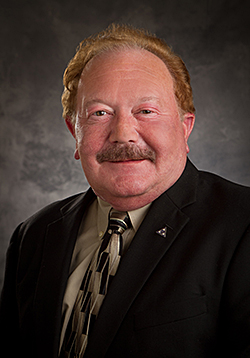Nov. 17, 2015
 As a modern-day rags-to-richly-nuanced life story in the radiologic sciences, the journey of Bill May, M.Ed., R.T.(R), FASRT takes us from a late-night escape in childhood through a lifetime of firsts in a profession that the radiographer and educator has helped define.
As a modern-day rags-to-richly-nuanced life story in the radiologic sciences, the journey of Bill May, M.Ed., R.T.(R), FASRT takes us from a late-night escape in childhood through a lifetime of firsts in a profession that the radiographer and educator has helped define.
A midnight journey from where he was born in Tennessee to a new home in Indiana set Bill on a path far different than his parents, who were among thousands of sharecroppers in the South fleeing lives of back-breaking work and debt in the 1950s. Then, as a high school student in 1969 anticipating a career as a math teacher and a scholarship to a college in Indiana, he chose a different path based solely on a friend’s tales of patients, hospitals and x-ray training that held more promise.
“I was a senior in high school and wanted to be a teacher and even had a scholarship to go to a teaching college. But halfway through my senior year, I changed my mind. My parents were devastated because no one in the family had ever gone to college,” says Bill. “But I really wanted to go to x-ray school.”
An associate degree from Indiana University, Northwest campus, and working as a staff radiographer at a facility in Gary, Indiana, quickly led Bill to his first volunteer position on the board of the District 1 Indiana Society of Radiologic Technologists. He joined the district group at his first meeting as a student even though he had been warned by the program director that “all they talked about was what food they were going to have at the next meeting. So I stood up and I was stuttering. I was so scared as I told them about what the program director had said and that it was true.”
Although he decided at that moment never to return, another technologist at the meeting challenged the young man to change things if he didn’t like the way they were going. Insulted at first, Bill stayed and took that advice. In fact, Bill credits his continued involvement in the profession to the assistance he received from fellow Indiana technologists. Richard Marks was the one who pushed him to become active at the district and state levels at that first meeting and Nancy Bowers approached him about his first teaching position at another district meeting.
“That’s how I got started. I was vice president of the district as an 18-year-old student,” says Bill. “And things started happening pretty quick after that. I was the youngest president of the Indiana state society when I was 24.”
Then support from his fellow technologists expanded outside the state. Henry Orth, a regional director from Michigan, was the next champion of the young man. Bill kept up the momentum by becoming an ASRT Board member in 1978. He became the Region 6 director, served as an affiliate delegate from Mississippi after he returned to his home state and then served as president of the Tennessee Society of Radiologic Technologists. He continues to serve as a delegate in education to this day.
National service subsequently led to Bill becoming president of the ASRT Board when theSociety formed the ASRT Foundation. That day he lent a dollar to Board member Becky Kruse, who turned around and gave it away to be the first to donate to the ASRT Foundation. Neither remembers whether she paid him back, but that meeting in Albuquerque, New Mexico, grew into so much more than either could have imagined.
Bill has more control over his latest donation to the ASRT Foundation, which he told the staff “to use any way they see fit. I served on that Board for a number of years and saw how important it was to let the Foundation figure out where the best place was to put the money.”
Oh, and his parents finally got their wish about their son graduating from college when Bill earned a bachelor’s degree in radiologic sciences, and then a master’s degree in education.